|
BUREAU FOR DEVELOPMENT, DEMOCRACY, AND INNOVATION
LOCAL, FAITH, AND TRANSFORMATIVE PARTNERSHIPS HUB
|
|
Limited Excess Property Program |
|
August 2022
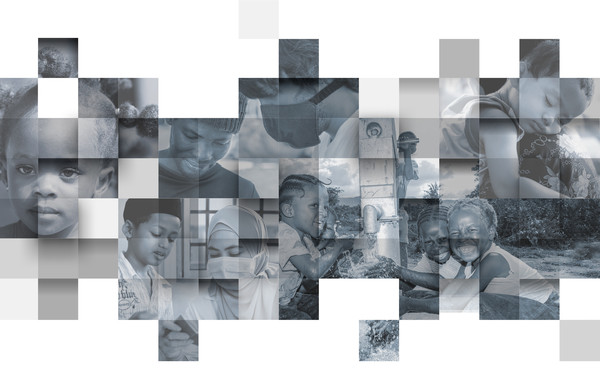
The Limited Excess Property Program (LEPP) provides Private Voluntary Organizations (PVOs) access to federal surplus property to support their humanitarian and development projects abroad. LEPP utilizes an innovative model of recovery and reuse to support a variety of development projects that promote sustainability in developing countries. LEPP is managed by USAID's American Schools and Hospitals Abroad (ASHA), which is part of the Bureau for Development, Democracy, and Innovation's Local, Faith, and Transformative Partnerships (LFT) Hub.
|
|
THIRD QUARTER LEPP PROPERTY TRANSFER HIGHLIGHTS |
|
|
A variety of items valued at $3,388,468 were requisitioned and processed through LEPP in the third quarter of fiscal year 2022. Most of the property was earmarked for regional hospitals and health care centers that serve remote populations in Africa, Asia, Eastern Europe, Latin America, and the Caribbean.
-
United Ukrainian American Relief Committee (UUARC), in partnership with LEPP, accessed $763,466 worth of medical supplies targeted to address humanitarian needs from Russia’s war against Ukraine. In June 2022, 24 ECG (electrocardiograph) devices, 29 stretchers, and seven hospital beds were shipped to Warsaw, Poland for distribution to regional hospitals in Ukraine through established UUARC channels. Supplies are targeted for use in village clinics and regional hospitals providing treatment for victims of Russia’s war against Ukraine. Many hospitals have been damaged and destroyed during the war, and the need for medical supplies and equipment continues to be dire. Because of the war, actual delivery sites will be determined based on the need and conditions on the ground at the time the supplies are available for delivery.
-
Food For The Poor (FFTP), in partnership with LEPP, accessed $535,472 worth of medical and surgical instruments that will ship to Guatemala. The equipment will go to The Children’s Hospital Juan Pablo II (Hospital Materno Infantil Juan Pablo II) in Mixco, Guatemala. The only pediatric hospital in Guatemala, The Children’s Hospital provides health care services to children and adolescents from birth to 17 years of age in more than 20 pediatric specialties. In addition, the hospital provides women's reproductive health care in the areas of gynecology and obstetrics as well as general health care services, including clinical laboratory, pharmaceutical, and X-ray services. The Children’s Hospital has one operating room in the maternity area and four in the pediatric area. The equipment for this shipment will go to pediatrics where on average 1,600 surgical procedures are performed annually.
-
Luke’s Health Care, in partnership with LEPP, accessed $14,690 worth of surgical instruments and ear thermometers that will ship to Soddo Christian Hospital (SCH) in Wolaita Sodo, Ethiopia. The surgical instruments will be used in the hospital’s orthopedic department for daily orthopedic surgery. Once sterilized, surgical instruments can be used repeatedly and last up to 10 years. The ear thermometers will be distributed to the neonatal and several other departments in SCH. SCH will also be opening a new operating room suite by May 2023, thanks to two USAID/ASHA grants in 2017 and 2019. The 2017 grant of $500,000 was a construction project to build an eight operating room Surgery Center, while the 2019 $412,500 grant supported the purchase of a variety of operating room equipment, including operating room tables, plasma sterilizers, C-ARMs, a laparoscopic tower, monitors and stands, and electrocautery equipment.
-
The Luke Commission (TLC), in partnership with LEPP, processed more than $154,000 worth of equipment, including hospital cabinets, medical pumps, surgical sterilizers, tourniquet systems, and a portable X-ray unit. These items will go to the Miracle Campus, TLC’s hub of operations and fixed-site medical facility in central Eswatini. TLC serves the most isolated and underserved populations of Eswatini, hosting over 130,000 patient visits annually through mobile medical outreaches and on the Miracle Campus, with a comprehensive health platform of over 45 medical services. In addition to core outpatient services, TLC provides emergency care, critical care, snakebite treatment, COVID-19 care, surgical care, physical therapy, mental health services, psychosocial services, and palliative care. All services are free to patients.
|
|
PVO SPOTLIGHT ON CURE INTERNATIONAL |
|
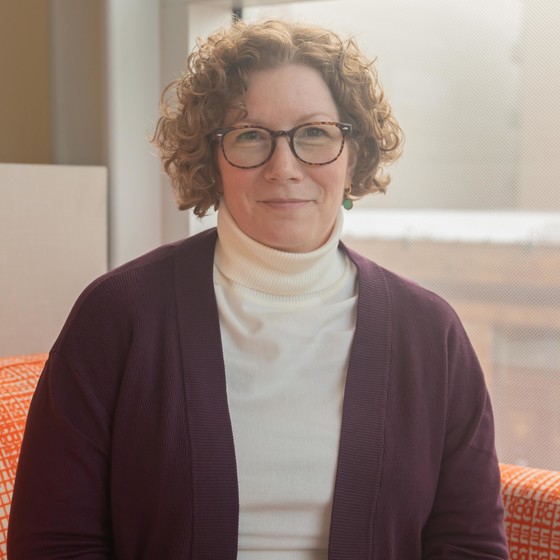 Caption/Alt Text: PHOTO CREDIT: CURE INTERNATIONAL. AMY HEWITT, GRANTS COORDINATOR, GRANTS ACQUISITION AND MANAGEMENT.
Q: You are one of our new PVO Partners for FY 21. We appreciate your partnership! Can you tell us a little about your program and your role?
A: For 25 years, CURE International (CURE) has operated a global network of pediatric surgical teaching hospitals that provide compassionate, world-class medical care for one of the world’s most vulnerable and marginalized populations—children living with disabilities. Many false and harmful traditional beliefs about disabilities are still prevalent throughout the world and as a result, these children are often rejected by their communities—living hidden away—unable to go to school, find work as they grow older, or participate in society. CURE provides specialized, charitable medical care to children with treatable disabilities and trains local health workers to do the same. We also know that physical healing is only part of the transformation that needs to occur for these children to reach their full potential. Our hospitals and health programs are built around a model of spiritual ministry, including trauma counseling and community outreach. As a result, our patients and their families experience healing, transformation, and restoration.
Since opening our first hospital in 1998, CURE has ministered to the needs of patients and their families through more than 5.2 million patient visits and 300,400 surgical procedures. Through CURE Neuro, we’ve partnered with surgeons to perform more than 19,000 surgeries to help children with neurosurgical conditions survive and thrive.
As part of the Grants Team at CURE, my role includes engaging with foundation partners, submitting proposals and reporting, and managing projects funded by grant awards, including CURE’s participation in the Limited Excess Property Program (LEPP). Additionally, my professional background includes 15 years of experience assisting partner organizations with their medical equipment needs for hospitals and clinics in low- and middle-income countries (LMICs).
|
|
 Caption/Alt Text: PHOTO CREDIT: CURE INTERNATIONAL. BIOMEDICAL STAFF MARK HEYDENBURG, U.S. AND TIMOTHY KALILO, ZAMBIA INSTALLING THE LEPP-ACQUIRED C-ARM AT CURE ZAMBIA.
|
|
Q: What types of humanitarian aid or development programs are (or will be) utilizing the federal surplus property transferred by your organization?
A: The federal surplus property transferred through LEPP will be utilized at CURE Children’s hospitals in Ethiopia, Kenya, Niger, Zambia, and the Philippines. Our hospitals offer a wide variety of specialized care such as orthopedics, neurosurgery, and reconstructive surgery. While most of our hospitals and programs are focused on serving children with disabilities, the Beit CURE Hospital of Zambia also provides other services such as Ear, Nose, and Throat (ENT) care.
|
|
|
The children receiving medical care at CURE hospitals have treatable conditions such as clubfoot, bowed legs, cleft lip, untreated burns, and neurosurgical conditions such as spina bifida and hydrocephalus.
Surplus property from LEPP is helping to equip our hospitals and improve the lives of children with disabilities through increased mobility and functionality. In addition, the LEPP program has helped expand access to essential services and increase capacity for local partners through health system strengthening.
Q: What community challenges/problems do these programs try to address? Can you share with us any statistical data related to the problems/challenges?
A: Although many people do not realize it, the children CURE serves are a part of the world’s largest minority, which is made up of the one billion people living with disabilities around the globe, many with surgically treatable conditions. For so many, there is little to no access to surgical care, and more children die of surgically treatable conditions than HIV, tuberculosis, and malaria combined. This lack of access occurs overwhelmingly in LMICs where children and adolescents make up a disproportionately large portion of the population. All people with disabilities experience difficulties, but children with disabilities in LMICs are especially vulnerable, and many of them face a lifetime of physical pain, poverty, discrimination, isolation, and unrealized potential.
Disability is both a cause and a consequence of poverty, contributing to more than 90 percent of children with disabilities in LMICs being unable to attend school. Children who experience difficulties walking, playing, or using fine motor skills are less likely to attend early childhood education programs and 42 percent of children with disabilities are less likely to have foundational literacy skills. This increases vulnerability in children, especially young girls, and may contribute to the high prevalence of child marriages in LMICs.
Q: Do any of your programs utilizing federal surplus property work on increasing women’s access to income, productive resources, or technology?
A: CURE strives to empower people with disabilities, both through the clinical services we provide and through the advocacy and awareness work we do in all the countries where we have a presence. Women and girls with disabilities face double discrimination since people with disabilities are often seen as cursed and face strong stigmatization resulting in discrimination, exclusion, and even physical and sexual abuse. The surgical and rehabilitative treatment girls with disabilities receive throughout the CURE hospital network improves their mobility and functionality, provides them with independence, and removes barriers to education and gainful employment.
It’s not only the children who benefit from treatment of their disabilities. Treatment of a child’s disability removes an often difficult and time-consuming caregiving burden from the mother, who is often the primary caregiver. This frees the mother’s time to pursue income opportunities and become more productive in her community.
|
|
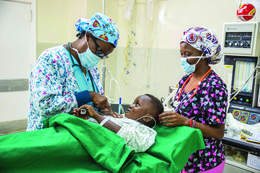 Caption/Alt Text: PHOTO CREDIT: CURE INTERNATIONAL. PATIENT IN OPERATING ROOM AT CURE CHILDREN’S HOSPITAL IN KENYA.
|
|
Q: Do any of your programs engage local stakeholders in the planning and implementation process of aid programs?
A: CURE collaborates closely with the Ministry of Health and regional health facilities in planning and implementing training opportunities for local health workers. Staff at CURE hospitals also engage with local pastors, community leaders, and Disabled People Organizations (DPOs) in planning and implementing mobile clinics and outreach programs educating and advocating on disability and inclusion.
|
|
|
What is most gratifying about working with CURE International and partnering with LEPP?
A: The LEPP staff has been approachable, timely, and extremely helpful during this first year of participation in the LEPP program. The earlier PVO training provided a solid base to begin participation in the program and the LEPP staff have answered questions and provided clarification along the way when needed. They are invested in helping PVOs succeed and there is a real sense of partnership and working towards a common goal to improve individual lives and communities in LMICs utilizing U.S. standards and best practices.
It’s also been gratifying to know that LEPP is genuinely excited and willing to communicate successes we have had in transferring property from LEPP to use in our programs.
|
|
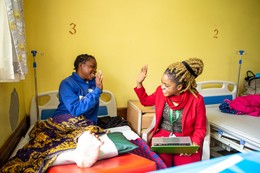 Caption/Alt Text: PHOTO CREDIT: CURE INTERNATIONAL. CURE SOCIAL WORKER READING GET WELL MESSAGES TO PATIENT AT
CURE ZAMBIA.
|
|
Q: Can you give some tips for other PVO partners on how you’ve used federal surplus property and/or property and ASHA grants to successfully support your programs?
A: Two of the priorities identified through CURE’s new three-year strategic plan are 1.) updating hospital facilities and 2.) biomedical equipment modernization and standardization to step up the standard of care across our hospital network. Many CURE hospitals have aging infrastructure that needs to be updated. Each CURE hospital is uniquely designed and built, and some are now more than 20 years old and in need of significant renovations.
|
|
|
Others are newer, but not aligned to modern form, fit, or function. Aging infrastructure and operational bottlenecks reduce the number of patients that we can serve and create safety risks that can be mitigated through thoughtful capital planning and upgrades. Current ASHA grants with CURE Niger, CURE Kenya, and CURE Zambia are helping to update and expand these facilities.
As with infrastructure, many CURE hospitals also have aging and outdated medical equipment. Having access to quality medical equipment in the GSAXcess database and the ability to transfer property from LEPP to our participating hospitals has jumpstarted CURE’s initiative to modernize and standardize medical equipment at our hospitals located in Ethiopia, Kenya, Niger, Zambia, and the Philippines. Indeed, it has been a coordinated effort with our in-country hospitals, procurement, biomedical technical staff, logistics, and LEPP. It’s been our experience that both LEPP and ASHA are exceptional programs that can help PVOs in real tangible and sustainable ways—we find the staff to be extremely helpful and responsive. My tip to other PVOs? Take the time to absorb and understand the guidelines ASHA and LEPP share and reach out to them with any questions you may have—it will be worth it.
Thanks so much for taking the time to help us learn more about your program and your passions, Amy. We look forward to many more years of partnering with CURE International to continue to serve underserved communities. — The LEPP Team
|
|
|
The Limited Excess Property Program is part of the Local, Faith, and Transformative Partnerships (LFT) Hub.
The LFT Hub focuses on strengthening USAID’s ability to partner with non-traditional and diverse actors including local, faith-based, and community organizations; schools and hospitals; foundations; diaspora communities; cooperatives; and volunteer organizations. Learn more about how LFT is harnessing the power of partnerships through the following:
|
|
WE WANT TO HEAR FROM YOU!
Your stories, photos, videos, and news releases are always welcome. Help us spread the good news about your work and partnership with LEPP. Also, LEPP PVOs and Missions, please notify us of your upcoming LEPP-related public diplomacy events. Please send information to LEPP@USAID.gov.
For further information on the LEPP program, please email: LEPP@USAID.gov.
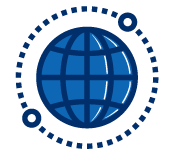 |
|
VISIT US ONLINE
|
 |
|
FOLLOW US ON TWITTER
|
 |
|
SUBSCRIBE TO OUR NEWSLETTER
|
|
|
|
|
|